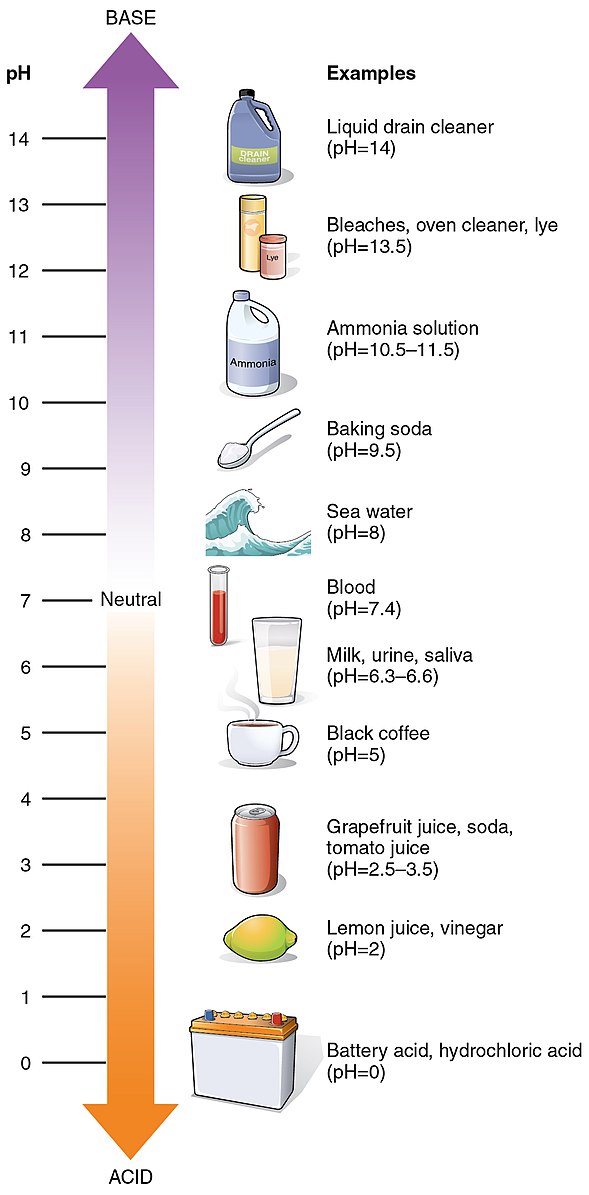The pH of carbon dioxide in water is a crucial topic in understanding the chemistry of aquatic environments. When carbon dioxide (CO2) dissolves in water, it forms carbonic acid (H2CO3), which then dissociates into bicarbonate (HCO3-) and hydrogen ions (H+). This reaction directly impacts the pH of the solution, with the partial pressure of CO2 being a key factor in determining the pH range.
Understanding the Relationship between CO2 and pH
At a CO2 partial pressure of 1 atm, the pH of the solution is approximately 5.65. As the partial pressure of CO2 increases, the pH decreases, making the solution more acidic. This is because the dissociation of carbonic acid leads to an increase in hydrogen ion concentration, which lowers the pH.
| CO2 Partial Pressure | Approximate pH |
|---|---|
| 1 atm | 5.65 |
| Increased | Decreased |
The pH of natural water bodies, such as oceans, lakes, and rivers, is heavily influenced by the presence of dissolved CO2. In seawater, for instance, the pH is regulated through a complex series of equilibria involving carbon dioxide, carbonic acid, bicarbonate, and carbonate ions. The average pH of seawater is around 8.1, making it slightly basic.
The Impact of Anthropogenic Activities on CO2 and pH
 Image source: OpenStax College
Image source: OpenStax College
However, human activities, such as burning fossil fuels and deforestation, have led to a significant increase in atmospheric CO2 levels. This, in turn, has resulted in a decrease in the pH of oceans, a phenomenon known as ocean acidification. The decline in ocean pH has serious implications for marine life, particularly for calcifying organisms like corals, mollusks, and some plankton, which rely on carbonate ions to build their shells and skeletons.
To mitigate the effects of ocean acidification, it is crucial to reduce CO2 emissions and promote sustainable practices that minimize the impact of human activities on the environment. Additionally, monitoring and measuring the pH of natural water bodies is essential to understanding the impact of CO2 on aquatic ecosystems and developing strategies to address this pressing issue.
Measuring and Monitoring the pH of CO2 in Water
The pH of carbon dioxide in water can be measured using various methods, including pH meters, colorimetric tests, and titration. pH meters are the most common and accurate method, as they provide a direct digital readout of the pH value. Colorimetric tests, on the other hand, involve adding a pH-sensitive dye to the water sample and comparing the color change to a reference chart. Titration methods involve adding a standardized acid or base solution to the water sample until the pH reaches a specific endpoint, which can then be used to calculate the pH.
Monitoring the pH of natural water bodies is crucial for understanding the impact of CO2 on aquatic ecosystems. This data can be used to track changes in pH over time, identify areas of concern, and develop strategies to mitigate the effects of ocean acidification and other environmental issues.
Conclusion
The pH of carbon dioxide in water is a complex and important topic in the field of aquatic chemistry. Understanding the relationship between CO2 and pH is crucial for understanding the dynamics of natural water bodies and the impact of human activities on these ecosystems. By monitoring and measuring the pH of CO2 in water, we can better understand the effects of ocean acidification and develop strategies to protect our aquatic environments.
References:
- What is the pH of carbon dioxide? What is the pH of carbon dioxide? (https://socratic.org/questions/what-is-the-ph-of-carbon-dioxide-what-is-the-ph-of-carbon-dioxide)
- 5.5 Dissolved Gases: Carbon Dioxide, pH, and Ocean Acidification (https://rwu.pressbooks.pub/webboceanography/chapter/5-5-dissolved-gases-carbon-dioxide-ph-and-ocean-acidification/)
- Ocean acidification | National Oceanic and Atmospheric Administration (https://www.noaa.gov/education/resource-collections/ocean-coasts/ocean-acidification)
